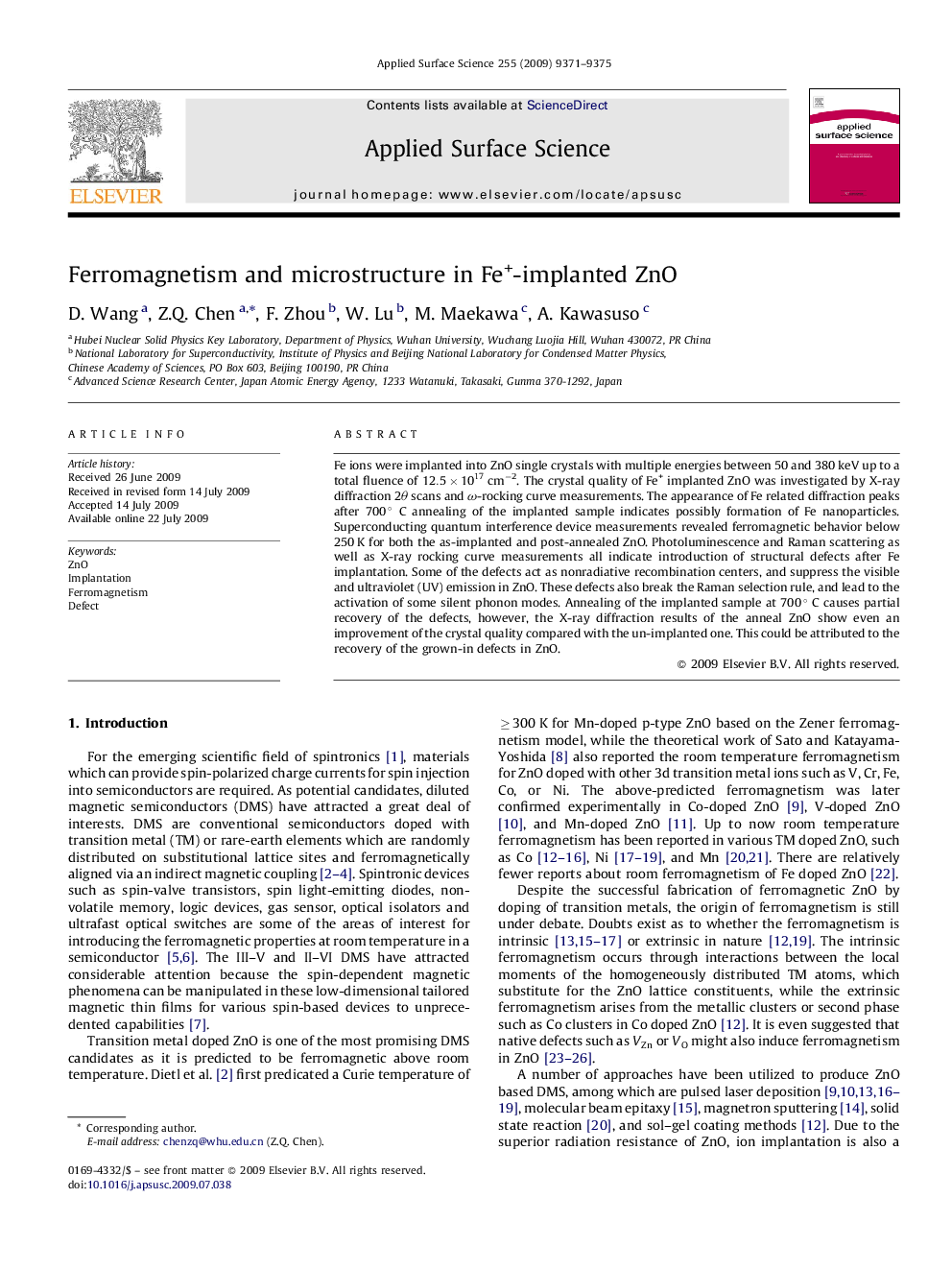| Article ID | Journal | Published Year | Pages | File Type |
|---|---|---|---|---|
| 5366245 | Applied Surface Science | 2009 | 5 Pages |
Fe ions were implanted into ZnO single crystals with multiple energies between 50 and 380 keV up to a total fluence of 12.5Ã1017 cmâ2. The crystal quality of Fe+ implanted ZnO was investigated by X-ray diffraction 2θ scans and Ï-rocking curve measurements. The appearance of Fe related diffraction peaks after 700° C annealing of the implanted sample indicates possibly formation of Fe nanoparticles. Superconducting quantum interference device measurements revealed ferromagnetic behavior below 250 K for both the as-implanted and post-annealed ZnO. Photoluminescence and Raman scattering as well as X-ray rocking curve measurements all indicate introduction of structural defects after Fe implantation. Some of the defects act as nonradiative recombination centers, and suppress the visible and ultraviolet (UV) emission in ZnO. These defects also break the Raman selection rule, and lead to the activation of some silent phonon modes. Annealing of the implanted sample at 700° C causes partial recovery of the defects, however, the X-ray diffraction results of the anneal ZnO show even an improvement of the crystal quality compared with the un-implanted one. This could be attributed to the recovery of the grown-in defects in ZnO.
